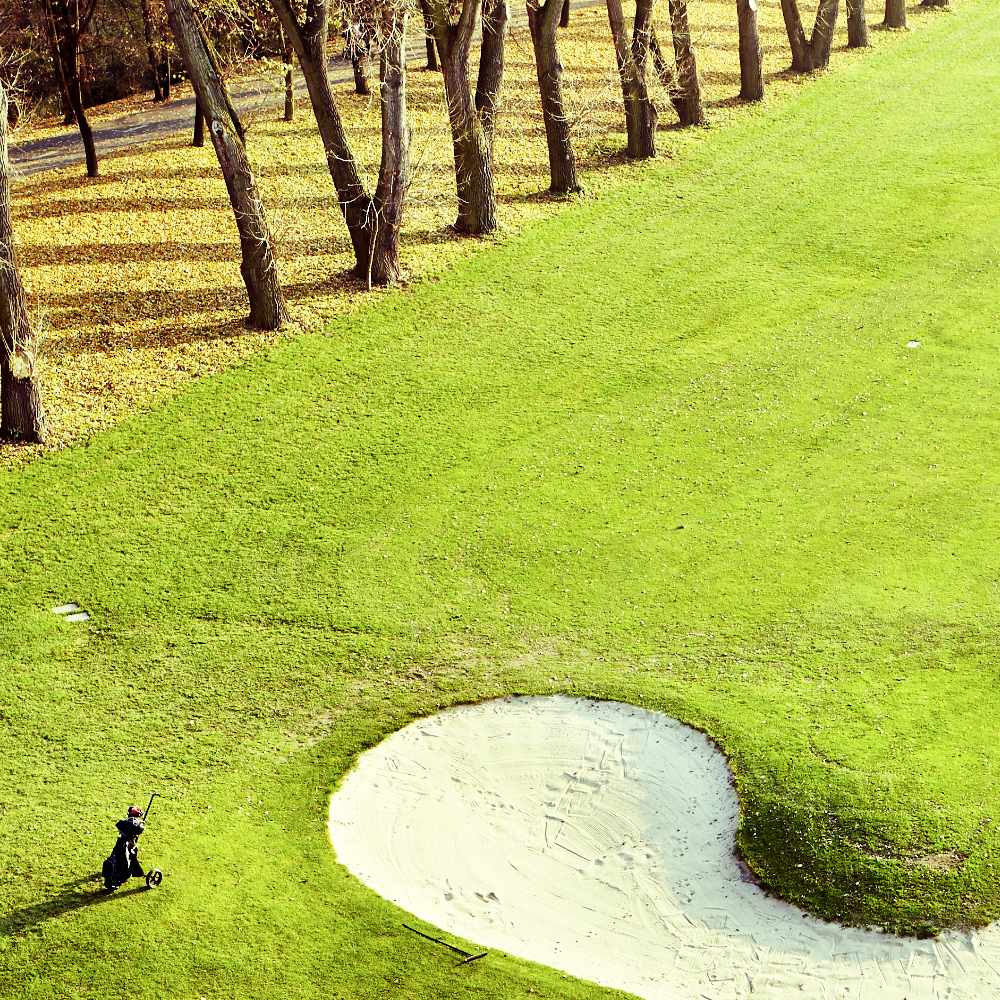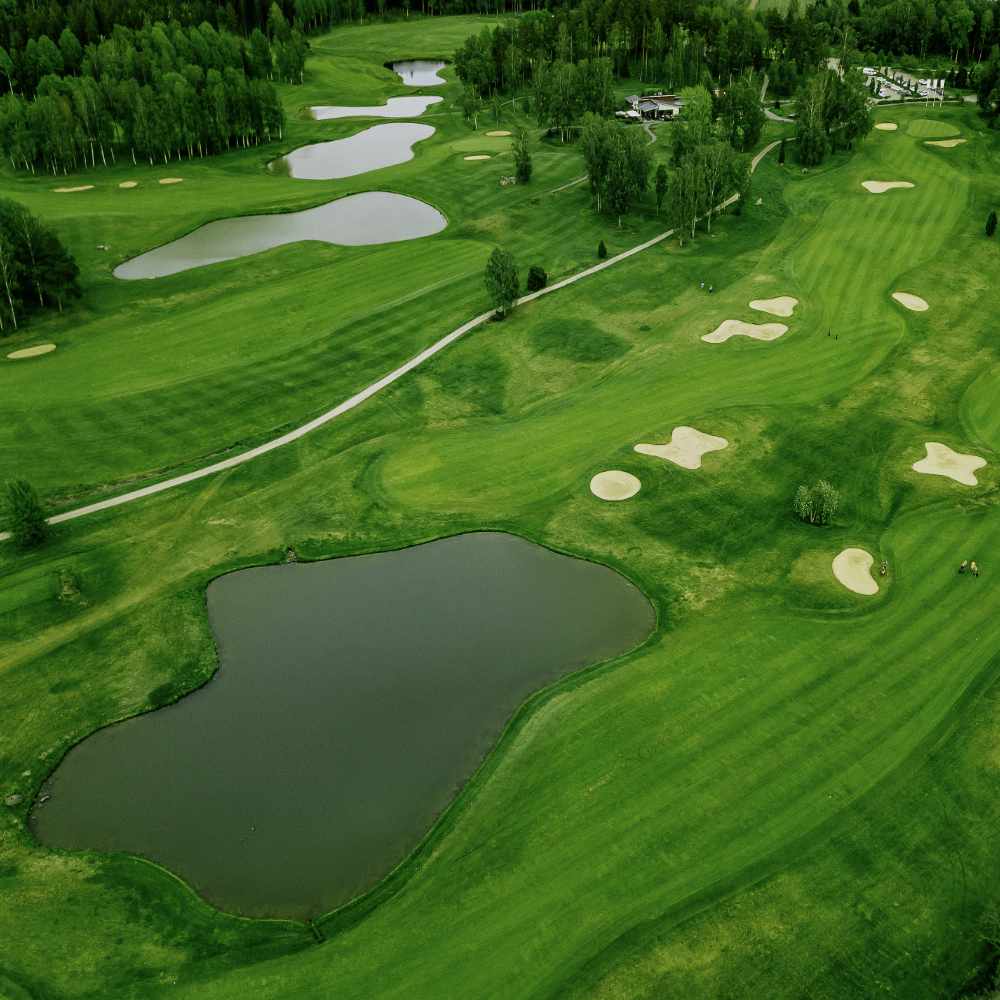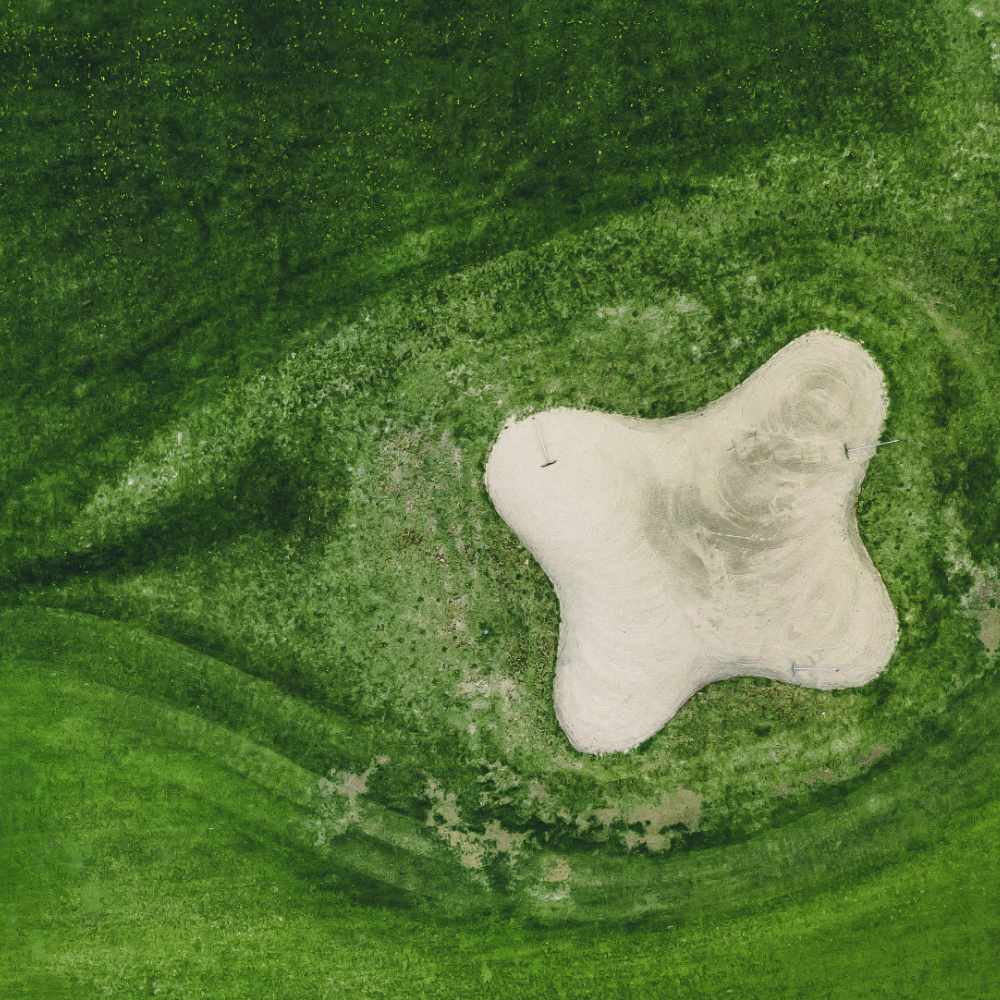Golf Course Bunker Design

What is a Golf Course Sand Trap?
According to an excellent GolfDigest.com article which we believe settles the “sand trap vs. bunker” debate, the correct term for a sand trap is “bunker.” Who knew? You have probably been blithely calling them sand traps all this time, not realizing that you are using slang, but nobody seems to mind… unless you are writing an authoritative article or golfing with some golf purists.
Golfers and non-golfers alike will agree that bunkers or sand traps are usually one of the most beautiful design features on the golf course. The sand varies in colour, cost, and quality. The best courses use premium sand and their bunkers are beautiful!

Golf Bunker Design
Golf course sand traps provide a bit of extra challenge to golfers as well as aesthetic enhancement, or “play interest.”
Have you ever wondered where they come up with the random-looking shapes?
The general word for these challenges are “hazards.” There are water hazards, sand hazards (bunkers), and even trees or bushes can be hazards.
In a nutshell, bunkers are punishment for a missed hit.
Bunkers should always be on a high or low point, and should be visible to the golfer from a distance so that they can plan their strategy.
The bunker is a “punishment” for a bad hit, and some bunkers are “worse” (deeper, wider, more difficult to get out of) than others. The difficulty of the hazard generally depends on the level of “punishment” the golfer “deserves” for a mis-hit.

Different Styles of Bunker Design
Heroic Design, Heroic Bunkers, offer Reward and Punishment for a Risky Shot
“Heroic design” in golf course architecture is a strategy which offers a reward and a punishment on a hole.
Taking a “hero shot” is the opposite of “taking your medicine,” which translates to taking a risky shot instead of “playing it safe,” and avoiding the hazard.
Novice golfers benefit from playing it safe around golf hazards like sand traps. If you are a good golfer, you probably want to take that risky shot to get to a premium spot on the green or fairway. You are going to need to cross water or sand, or dodge trees.
If you hit successfully, you are rewarded for your heroism; otherwise, you find yourself in water or hitting out of a bunker.
You will probably see an example of heroic design the next time you see a sand trap on the inside of a dogleg.

How are Golf Course Sand Trap Shapes Decided?
It all seems a bit whimsical, and this is the whole reason for this article.
A lot of it seems to boil down to budget, but also depends of the character of the course.
Golf course architects generally design the size and shape of a bunker in proportion to the length and difficulty of the hole. So longer, more difficult holes will have bigger, more vexatious bunkers.
Some golf courses really lean into feats of design with their bunkers and there are some interesting shapes out there. Complicated designs can be difficult to maintain, though, and that translates to budget. Some golf course architects like to stick to simple shapes simply for ease (and economy) of maintenance.
It is not unusual for golf courses to have to simplify an elaborately designed bunker during an economic recessions in order to save labour.
Interesting Golf Course Bunkers
Check out this hilarious bunker:
“The Devil’s A**hole:”
Another Pine Valley Horror Story
Here is a bunker which appears to have caused one person something like post-traumatic stress! He shot right from the tee onto the green and got an 11….
Read his bunker horror story here on Burlington County News – it’s hilarious!




